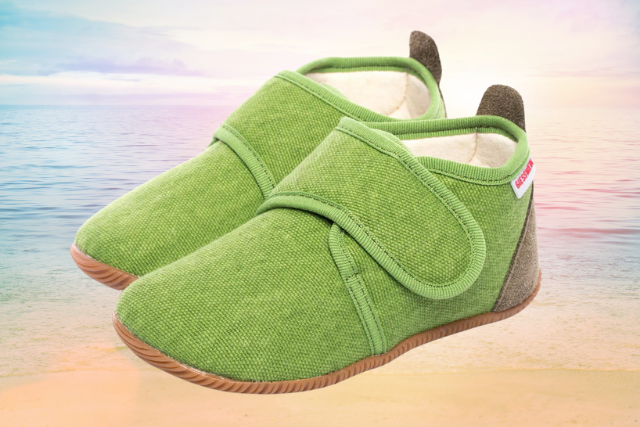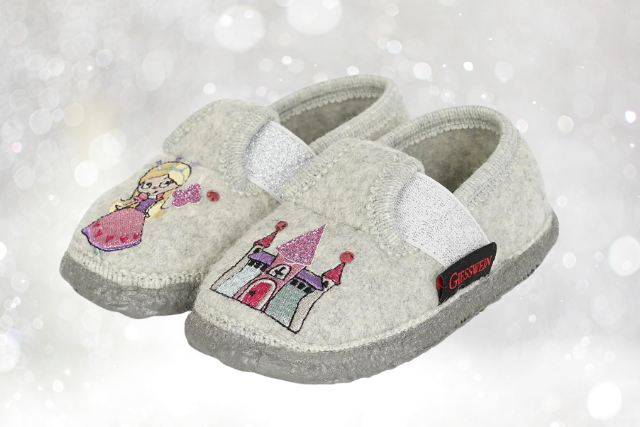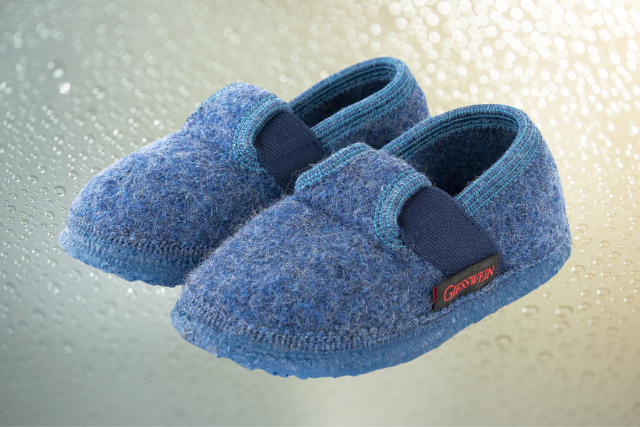Children slippers: tips for the perfect choice


Children's slippers are not only cosy, but also keep feet warm, protect against dirt and offer more safety when playing. Nevertheless, many people are not sure whether slippers are recommended for small children. The reason for this is the development of foot muscles and joints, which, according to doctors, is best promoted by walking barefoot. However, if you choose the right quality and size of children's slippers, they can also provide optimum support for your little one's feet.
What should I look out for in slippers?
The choice between barefoot, socks or slippers depends on the surface children walk on and how active they are. Slippers keep feet warm and clean, especially on colder tiled floors. A non-slip sole provides additional grip and protects against possible accidents. The sole should be soft and flexible in order to adapt optimally to the foot and support natural development. Despite increased activity and the associated sweating, feet should remain dry. Slippers made from breathable materials such as shearling or cotton are therefore a good choice. Models with Velcro fasteners or elasticated straps allow individual adjustment to the width of the toddler's feet and are also easy to put on.
What shoe size does my child need?
Did you know that around 9 out of 10 children wear slippers that are too small? This finding comes from the Austrian research project "Children's Feet-Children's Shoes". Shoes that are too small or too big can lead to foot deformities and postural problems later on. When buying new children's shoes, it is important that they are about 10 to 15 mm longer than the feet so that the toes have enough room. The thumb test is often unreliable, so there are other methods to find out the optimum shoe size:
-
Make a template: Your child stands on a piece of cardboard, traces the outline of the foot, adds 15 mm and cuts out the template. If it fits into the desired shoe without creasing, it is correct.
-
Removable insoles: Your child stands on the insoles to check whether there is enough room for the toes.
-
Measuring devices in a specialist shop: Go to a specialist shop where there are special measuring devices for children's feet and where you can get additional advice.
CHECKLIST for the purchase of children's shoes
For a better overview, here is a summary of all the important points:
- Always try on shoes before buying. Are you ordering online? Then make a template and compare the measurements with the size chart.
- The shoes must not be too small - the toes need 10 to 15 mm of room to roll.
- Children up to the age of 10 cannot judge the fit of shoes themselves, so always measure beforehand and determine the correct shoe size.
- The usual thumb test is not advisable for children. Children reflexively pull their toes back as soon as they feel pressure. It is best to make a cardboard template.
- Try on or measure in the afternoon when children's feet are a little swollen from running and romping around.
- Children's feet grow in stages, so check every 2 to 3 months whether the shoes still fit.
Which slippers for summer?
Even in warm weather, your children's feet shouldn't sweat in slippers. That's why we use high-quality, natural cotton. It is light, breathable and absorbs excess moisture, so unpleasant odours don't stand a chance. The natural material is particularly skin-friendly and ensures a comfortable fit.

Which slippers for winter?
When it's stormy and snowy outside, children's little feet long for cosy slippers. Our children's slippers made from the finest new wool are incredibly soft and wonderfully warm. They are rounded off with our patented natural rubber sole, which is particularly flexible and non-slip.

Which slippers for children with a high instep?
At nursery or kindergarten, slippers with a firm sole are desirable so that the little ones don't slip when romping around. Choosing suitable slippers for children with a high instep can often be difficult - but not with us. Our traditional slippers have an elasticated knitted cuff that offers enough room for a high instep.

Which slippers for children with sweaty feet?
Feet often tend to sweat in slippers made of synthetic materials. It is therefore advisable to opt for children's slippers made from high-quality, breathable materials such as wool or cotton. Wool naturally regulates foot temperature, absorbs moisture and transports it to the outside. This keeps feet dry and free from unpleasant odours.

With these tips, you are now well equipped to find the perfect slippers for your child. Look for high-quality materials, a good fit and a non-slip sole so that your little one can enjoy maximum comfort and safety. If you keep these aspects in mind, nothing will stand in the way of cosy hours at home. Have fun browsing and discovering!
Giesswein slippers for children
What do our customers say?
Catherine - ★★★★★
Anonymous - ★★★★★

























